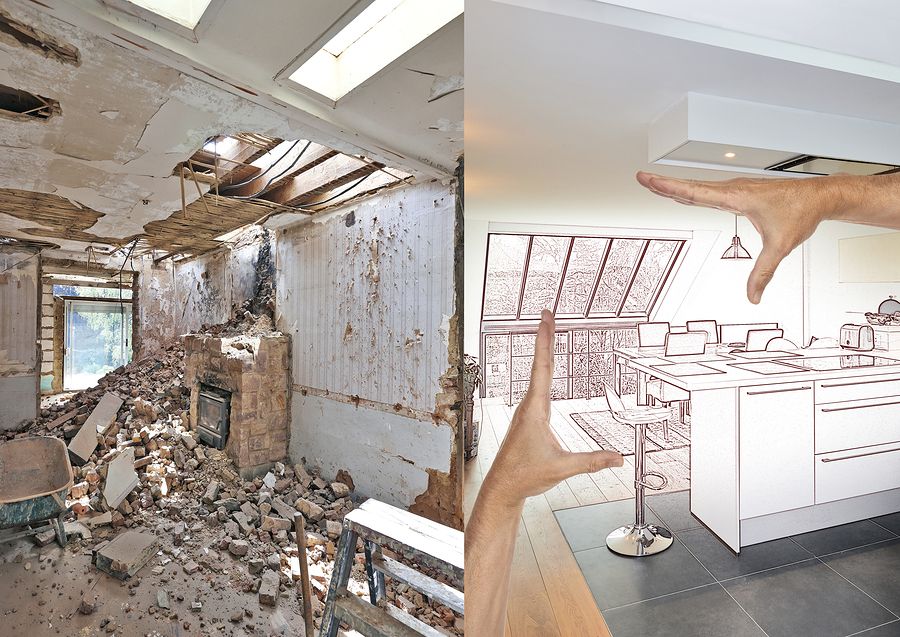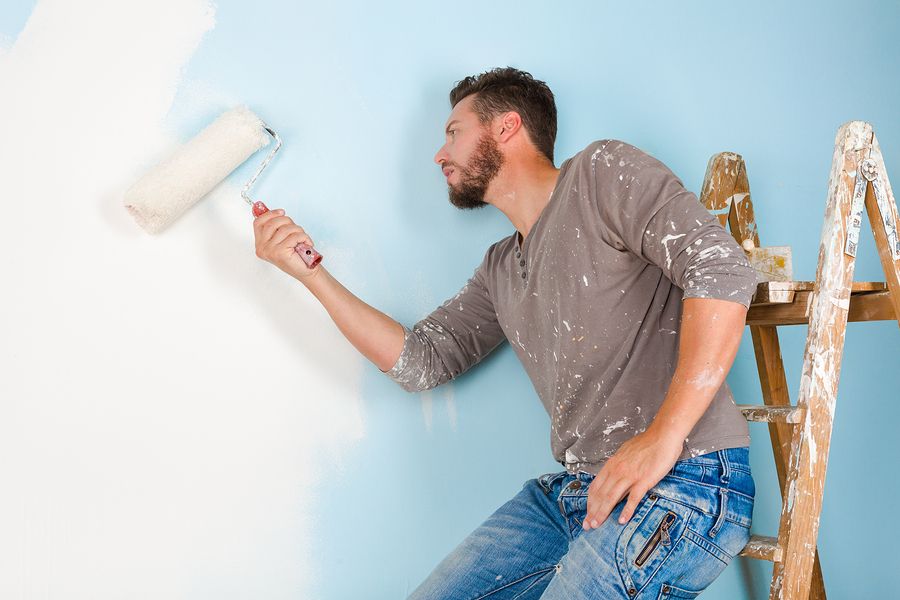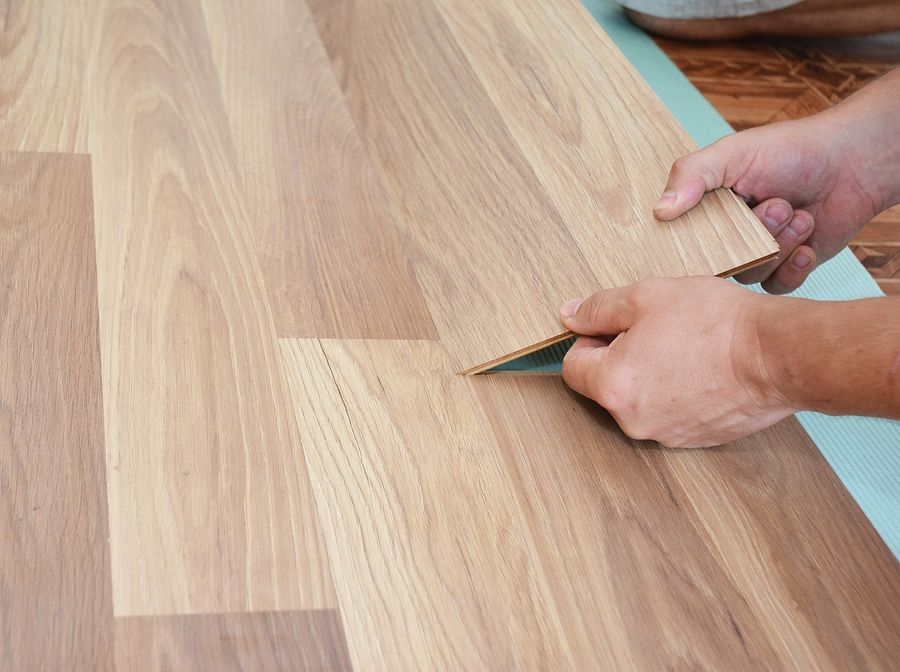
Jumping Right In
 It's always exciting to start a new project. You've probably got an image in your head of the finished space and are anxious to make it a reality. Unfortunately, you'll be opening yourself up for failure if you don't have some idea of what you're getting into. Take the time to research online, such as:
It's always exciting to start a new project. You've probably got an image in your head of the finished space and are anxious to make it a reality. Unfortunately, you'll be opening yourself up for failure if you don't have some idea of what you're getting into. Take the time to research online, such as:
- Tools you'll need to rent or buy
- Materials needed—some items will need to be ordered that need a long lead time
- Can the materials be delivered to your home or will you need to pick it up? If so, do you have access to a truck?
- Supplies needed—screws, nails, special adhesive, drop cloths, brushes, etc.
- Can you do the work alone or will you need an assistant?
- How long will the job take to complete?
Skipping the Prep Work
 No one enjoys preparing to do a job, but it's critical that you not skip this process if you hope to have a successful outcome. It's easier to take a sledgehammer to the wall than to painstakingly remove kitchen cabinets from the wall screw-by-screw. By taking the time to do the job right, you'll save yourself time, money and a lot of headaches.
No one enjoys preparing to do a job, but it's critical that you not skip this process if you hope to have a successful outcome. It's easier to take a sledgehammer to the wall than to painstakingly remove kitchen cabinets from the wall screw-by-screw. By taking the time to do the job right, you'll save yourself time, money and a lot of headaches.
Forgetting the Permits
It might be tempting to sneak in a home renovation without applying for the proper building permits, but the few dollars you'll save up front may cost you big time later. Regulations vary by area but assume you'll need to maintain minimum quality standards for any structural, window replacement, plumbing, electrical, heating or air conditioning work. Building inspectors can confirm you're doing the work right, which will provide peace-of-mind that your home is safe. If you insist on bypassing this step, be prepared to pay big fines or be forced to tear it down if you get caught.Setting an Unrealistic Budget
 Preparing a budget for a large renovation job involves much more than just adding up the cost of materials. If you're doing the work yourself, you may not consider labour costs when budgeting. However, time is money, and if you end up spending months on this project, you may have to pay someone to do those other things you don't have time to do yourself.
Don't cheap out when buying materials either. You don't have to buy top-of-the-line products but "you get what you pay for" definitely applies here. Budget for mid-level price points to be sure your finished project will look great and function properly for years.
Expect the unexpected. Most every DIYer has encountered more than he bargained for when doing a "simple job." You may find a leaky pipe behind the drywall in the bathroom or exposed wiring where a mouse nibbled away the insulation. Be sure to pad your budget to make it more realistic.
You may be able to save money on home improvements with energy efficiency rebates, but many programs require licensed contractors to do the work. It may be worth it to budget for labour charges to save thousands with rebates.
Preparing a budget for a large renovation job involves much more than just adding up the cost of materials. If you're doing the work yourself, you may not consider labour costs when budgeting. However, time is money, and if you end up spending months on this project, you may have to pay someone to do those other things you don't have time to do yourself.
Don't cheap out when buying materials either. You don't have to buy top-of-the-line products but "you get what you pay for" definitely applies here. Budget for mid-level price points to be sure your finished project will look great and function properly for years.
Expect the unexpected. Most every DIYer has encountered more than he bargained for when doing a "simple job." You may find a leaky pipe behind the drywall in the bathroom or exposed wiring where a mouse nibbled away the insulation. Be sure to pad your budget to make it more realistic.
You may be able to save money on home improvements with energy efficiency rebates, but many programs require licensed contractors to do the work. It may be worth it to budget for labour charges to save thousands with rebates.
Electrical Shortcuts
 It's critical that you not take shortcuts when it comes to electrical wiring in your home. Don't overload circuits by adding more than your panel box is designed to handle. Make sure all electrical connections are secure to prevent arcing and fires. If you're remodelling a kitchen or bath, be sure to use GFCI electrical outlets instead of standard plugs to prevent the risk of electrocution in case an appliance is dropped into the water.
It's critical that you not take shortcuts when it comes to electrical wiring in your home. Don't overload circuits by adding more than your panel box is designed to handle. Make sure all electrical connections are secure to prevent arcing and fires. If you're remodelling a kitchen or bath, be sure to use GFCI electrical outlets instead of standard plugs to prevent the risk of electrocution in case an appliance is dropped into the water.
Wrong Plumbing Substitution
 With the cost of copper skyrocketing, many new plumbing companies are substituting CPVC tubing for copper or steel water supply lines. It's easier to work with, you won't need to solder it, and it won't erode from harsh water. The downside is that CPVC is not a good conductor. Many electricians use a copper or steel water pipe to ground the electrical system. If you've broken the continuity, your home could be at risk of fire or safety hazard. Consult with an electrician before altering your plumbing system to be sure your home is safe.
Be especially careful if you're replacing plumbing that was installed between 1940 and 1970 as it may contain asbestos. This can be extremely hazardous to your health. You can't just wear a dust mask for protection as fibres are microscopic and breathing it in can cause long-term health issues. Seek professional help with experience handling hazardous materials.
With the cost of copper skyrocketing, many new plumbing companies are substituting CPVC tubing for copper or steel water supply lines. It's easier to work with, you won't need to solder it, and it won't erode from harsh water. The downside is that CPVC is not a good conductor. Many electricians use a copper or steel water pipe to ground the electrical system. If you've broken the continuity, your home could be at risk of fire or safety hazard. Consult with an electrician before altering your plumbing system to be sure your home is safe.
Be especially careful if you're replacing plumbing that was installed between 1940 and 1970 as it may contain asbestos. This can be extremely hazardous to your health. You can't just wear a dust mask for protection as fibres are microscopic and breathing it in can cause long-term health issues. Seek professional help with experience handling hazardous materials.
Replacement Window Mishaps
 Replacement window mistakes to avoid are:
Replacement window mistakes to avoid are:
- Not identifying where electrical wiring, plumbing and ductwork before cutting into the wall to install a new window. You may need a professional to move the mechanicals, or you might need to choose a new location for the window.
- Choosing the wrong replacement windows for your home. You may be able to save some money by retrofitting the new windows to the old frames. However, re-using rotted or damaged components can lead to inefficient, leaky windows.
- Be aware of the aesthetic differences between sliding and crank windows as well as the glass colour differences with Low-E or Argon Gas-filled vs. clear glass. If you replace just a few units at a time, the appearance will have a negative impact on your home's curb appeal. New windows should complement the existing styles to enhance the overall look and provide an excellent return on investment in the future.
Using the Wrong Type of Paint
 Today's paint formulas are produced to provide the most durable products for every project. That means you'll need to choose the proper paint for the specific application you're working on. Flat paints are generally used for ceilings, matte finishes are for walls, semigloss paints are used in bathrooms to handle excess moisture, and glossy works well for areas that require a washable surface. Mix them up and you'll be disappointed with the durability and overall appearance.
Today's paint formulas are produced to provide the most durable products for every project. That means you'll need to choose the proper paint for the specific application you're working on. Flat paints are generally used for ceilings, matte finishes are for walls, semigloss paints are used in bathrooms to handle excess moisture, and glossy works well for areas that require a washable surface. Mix them up and you'll be disappointed with the durability and overall appearance.
Rushing a Hardwood Floor Refinishing Job
 Everyone loves the look of a natural hardwood floor. If you've decided to refinish your hardwood flooring yourself, it's important to discuss your project with a home improvement tool rental agent. You'll need to rent a floor sander and follow specific steps to stripping the old finish and reapplying a new one. The biggest problem do-it-yourselfers have is rushing to do extra coats of polyurethane before it has dried sufficiently as well as walking on the floor before it's had time to thoroughly cure.
Everyone loves the look of a natural hardwood floor. If you've decided to refinish your hardwood flooring yourself, it's important to discuss your project with a home improvement tool rental agent. You'll need to rent a floor sander and follow specific steps to stripping the old finish and reapplying a new one. The biggest problem do-it-yourselfers have is rushing to do extra coats of polyurethane before it has dried sufficiently as well as walking on the floor before it's had time to thoroughly cure.

Leave A Comment